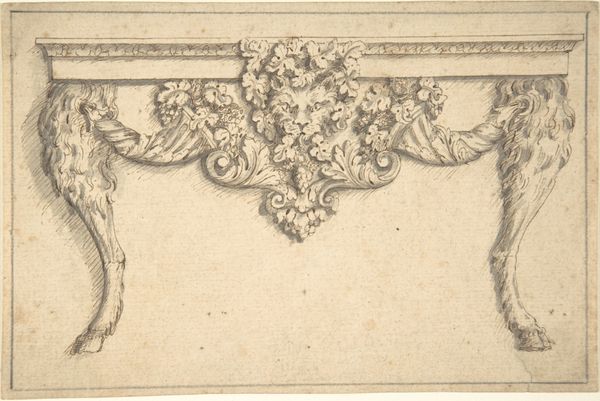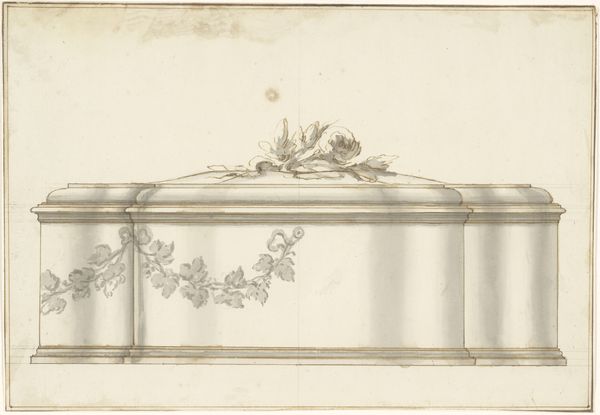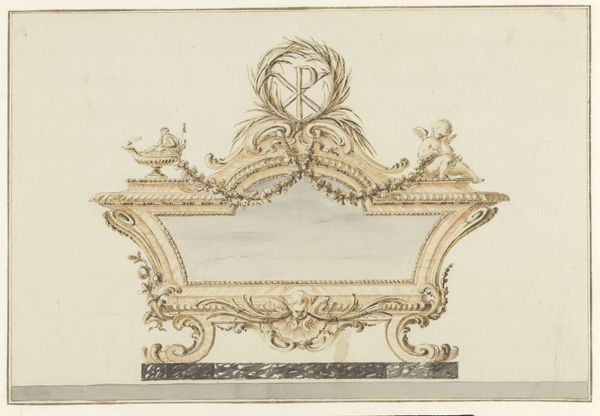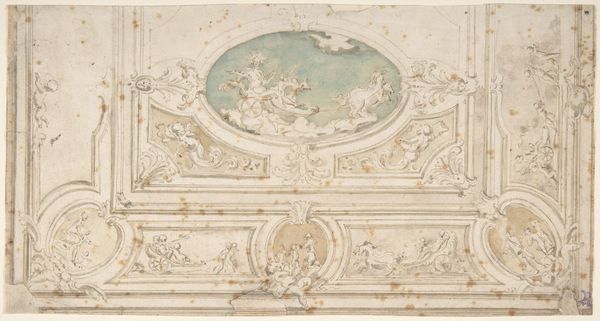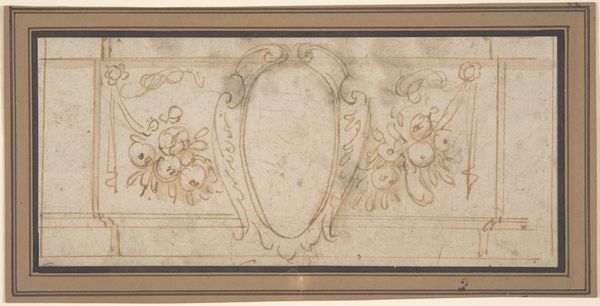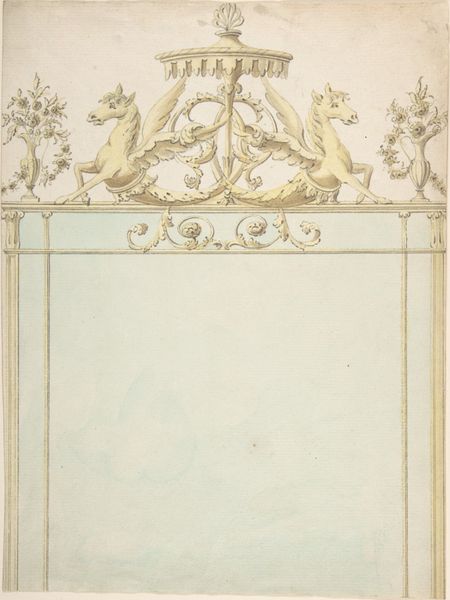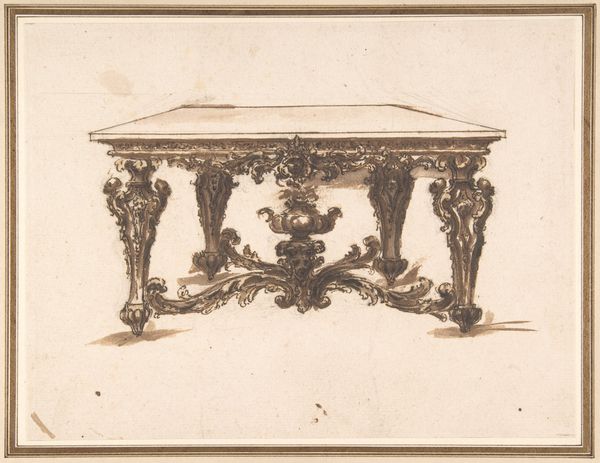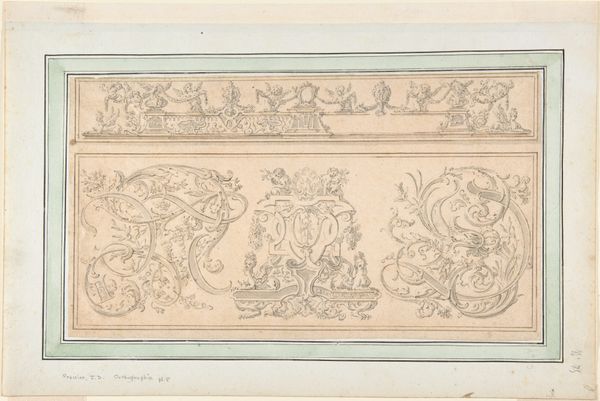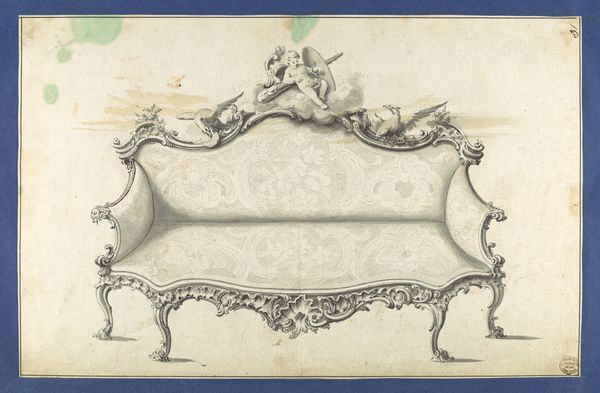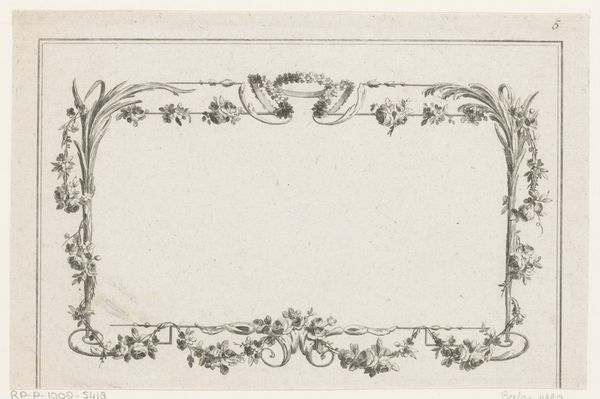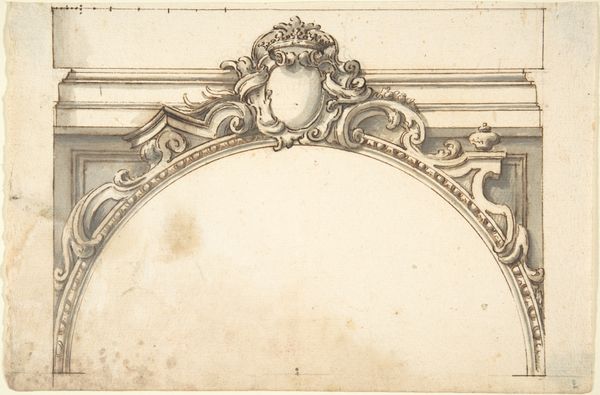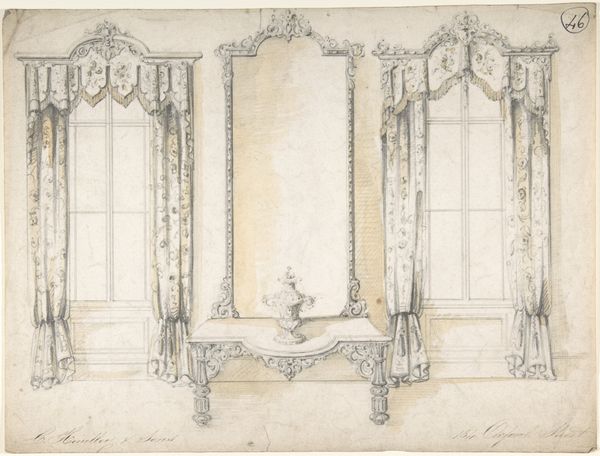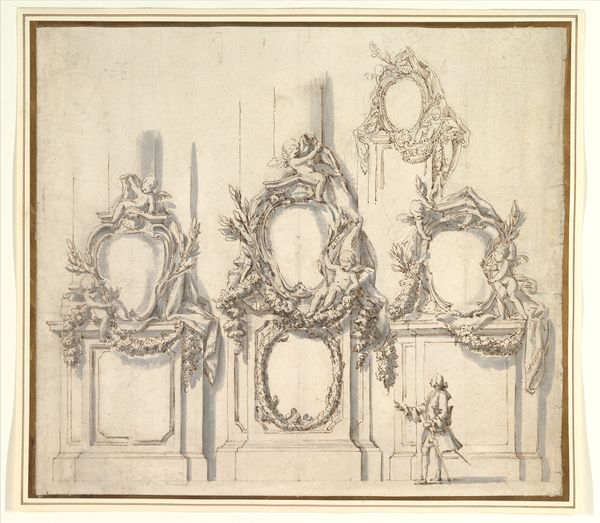
Ontwerp voor een zilveren doos met deksel op schelpvormige poten, met alternatieve oplossingen links en rechts c. 1760 - 1770
0:00
0:00
Dimensions: height 236 mm, width 338 mm
Copyright: Rijks Museum: Open Domain
This is a design for a silver box with lid, made by Luigi Valadier in the 18th century. The drawing uses traditional art materials, ink and watercolor, but it is not itself fine art. Rather, it proposes an object to be made. Imagine the silversmith’s labor involved in realizing this design. The box would be raised by hammering, its shell-shaped feet and floral garlands likely cast and then chased with fine detail. The lid is surmounted by a lifelike rose. These naturalistic forms, fashionable at the time, require incredible skill. Consider, too, the social context. Silver was a luxury material, its value tied to global trade routes and colonial exploitation. The box itself would have been a status symbol, displayed in a wealthy home as an assertion of power. Valadier’s drawing is thus not just a design, but a document of the economic and social structures of his time, rendered visible through the implied labor and material value of the object it depicts. It prompts us to think about the relationship between art, craft, and the wider world.
Comments
No comments
Be the first to comment and join the conversation on the ultimate creative platform.
